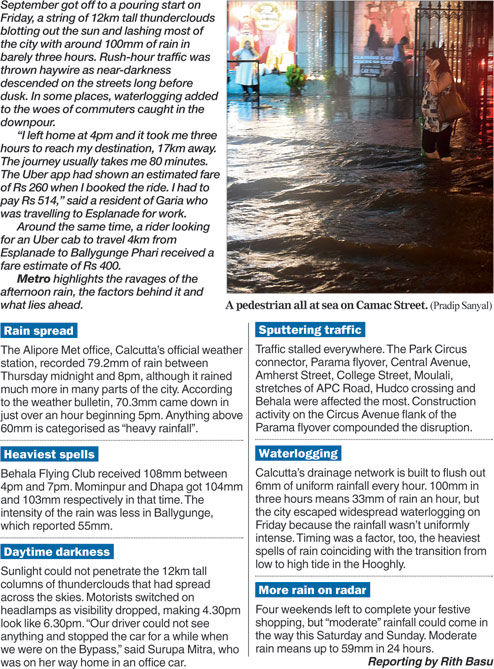
Calcutta: The rush to beautify open spaces wherever they still exist is robbing Calcutta of its last remaining playgrounds.
The number of parks with fountains and concrete walkways has increased over the past few years even as options are disappearing for children wanting to play a game of cricket or football or simply sprint across a ground.
Poorly maintained playgrounds across neighbourhoods are getting transformed into parks with tiny play arenas surrounded by concrete pathways barely wide enough for two persons.
A recent study by the Calcutta-based Centre for Contemporary Communication has revealed that community halls, community toilets and apartment buildings have sprung up on what were once parks or playgrounds.
Besides, a number of open grounds have been converted into parks with a fountain in the middle. Such fountains eat into the open space and turn into mosquito breeding sites once they become defunct.
Environment activists are worried about the continuous assault on green space, which constitutes merely two per cent of the city's area. Ideally, around 10 per cent of a city's area must remain open, activist Subhas Datta said.
The assault is abetted by the absence of a master plan. "Calcutta is the only metropolitan city that doesn't have a master plan (also called development plan). All other metros have such plans, which contain detailed guidelines on how much open and green space will be there and how to maintain them," an urban planner who has worked with the Bengal government said.
In the absence of a master plan, it is up to government officials and engineers to decide what to do with the open space. The problem is compounded by the fact, as urban designer Partha Ranjan Das pointed out, that civic bodies do not consider landscaping a specialised job.
"The Delhi Development Authority has a landscape architecture department, which follows the guidelines laid down in the master plan," Das said.
In Calcutta, no such wing exists in the Calcutta Municipal Corporation, Calcutta Metropolitan Development Authority or the public works department.
The study by the Centre for Contemporary Communication, which works to protect Calcutta's environment, has also expressed concern over concretisation of open spaces.

"We have noticed extensive concretisation of open spaces. Around 60-70 per cent of the parks have been paved with concrete," said Mallika Jalan, executive director of the organisation. According to environment activist Subhas Datta, no more than 20 per cent of a park should be paved with concrete.
Jalan pointed out that most major cities of the world have a policy on maintenance and regulation of open space. "I have been asking the Calcutta Municipal Corporation for many years whether they have any such policy. I am yet to get a reply," she said.
The Centre for Contemporary Communication has listed 760 parks in Calcutta. Around 500 of them are less than 1,000sq m. Tallah Park in north Calcutta and the Park Circus Maidan are among the handful that measure more than 10,000sq m.
A resident of Ballygunge cited how renovation has destroyed a big chunk of open space at the erstwhile Chaplin Park on Cornfield Road, which is now known as Citizen's Park. The renovated park has got a fountain, some play furniture for children and a concrete walkway at the cost of open space.
A field in Sovabazar, in north Calcutta, and another in Bijoygarh, in the south, are among the open spaces that have drastically shrunk.
"A community centre has come up on the Sovabazar plot and a fountain on the Bijoygarh ground," said a member of the team that has conducted the study for the Centre for Contemporary Communication.
Urban designer Das stressed the need for having open space accessible to all. The plots on which Gitanjali Stadium and Acropolis Mall stand were four large playgrounds about 15 years back. "Like the Maidan, everyone had access to the grounds. We are rapidly losing such grounds," Das said.
A civic official admitted that playgrounds were shrinking. "How a park will be renovated depends on what the local councillor wants. If a councillor wants a concrete pathway, we cannot say no," the official said.
He, however, cited some instances of an open ground remaining open even after renovation. "A year back, we had renovated a small ground near Santosh Mitra Square. It is still a playground," the official said.
Renovation has some positives, too, according to officials. "Fountains, benches, play furniture and concrete walkways act as a bulwark against encroachment. They also draw people and families to parks," an official said.
"Many of the parks that have been beautified would turn into dens of criminals after sundown. Following beautification and installation of lights, they have again become family haunts."











